Artworks featured in Jasmine in Paris
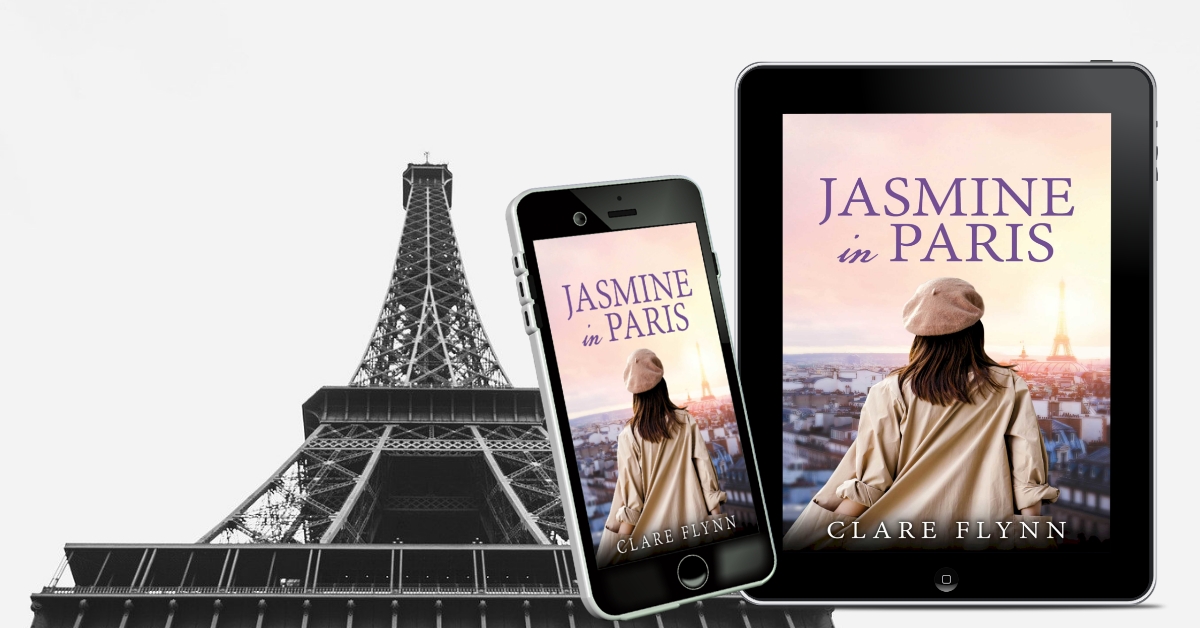
My next novel, Jasmine in Paris: Far from Penang, will be published on 30 November 2021. As I am sure I’ve mentioned before, it is about Jasmine, the young protagonist of A Painter in Penang, as she studies fine art at the École Superière des Beaux Arts in Paris in 1949-50.
The Beaux Arts is one of the world’s finest and oldest art schools. It was founded in 1648 when Cardinal Mazarin established the academy for fine art to educate the crème de la crème in painting, sculpture, architecture and more. Its buildings in Rue Bonaparte on the Left Bank date mainly from 1830. In the covered courtyard, La Grande Cour, plaster cast statues were kept for students, including Jasmine, to use to execute detailed classical drawings. This study of the classic sculptors is a fundamental plank of the famed Atelier system, still practised widely today in the study of fine art.
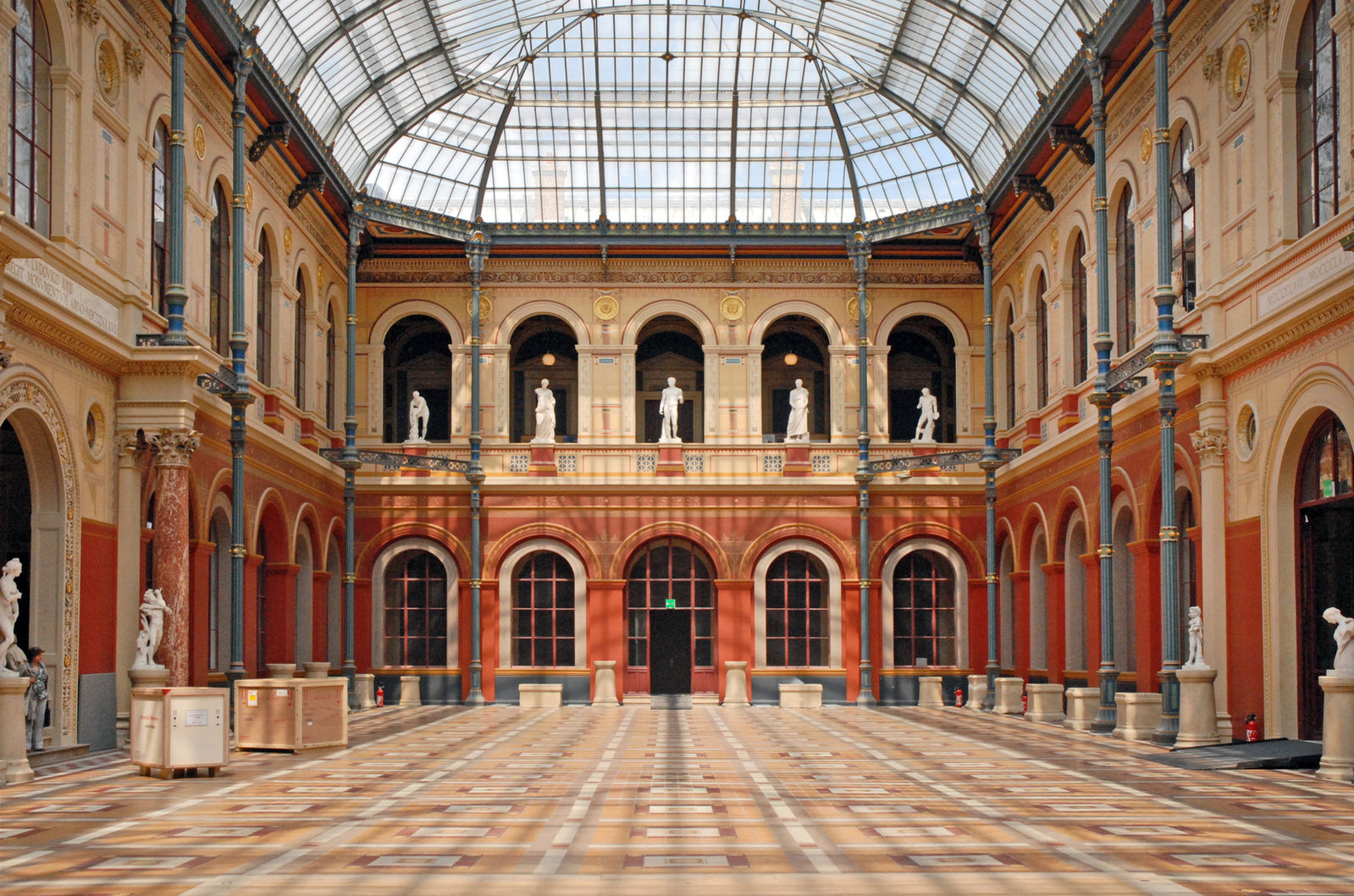
The covered courtyard (la Grande Cour) of the Beaux Arts. Image by Dalbera, via Wikimedia Commons.
One of the most spectacular rooms in the school is the Salon Des Prix which contains an amazing semi-circular mural by Paul Delaroche, known as The Hemicycle. It is in this room that prizes were bestowed – including the valuable and prestigious Prix de Rome scholarship.
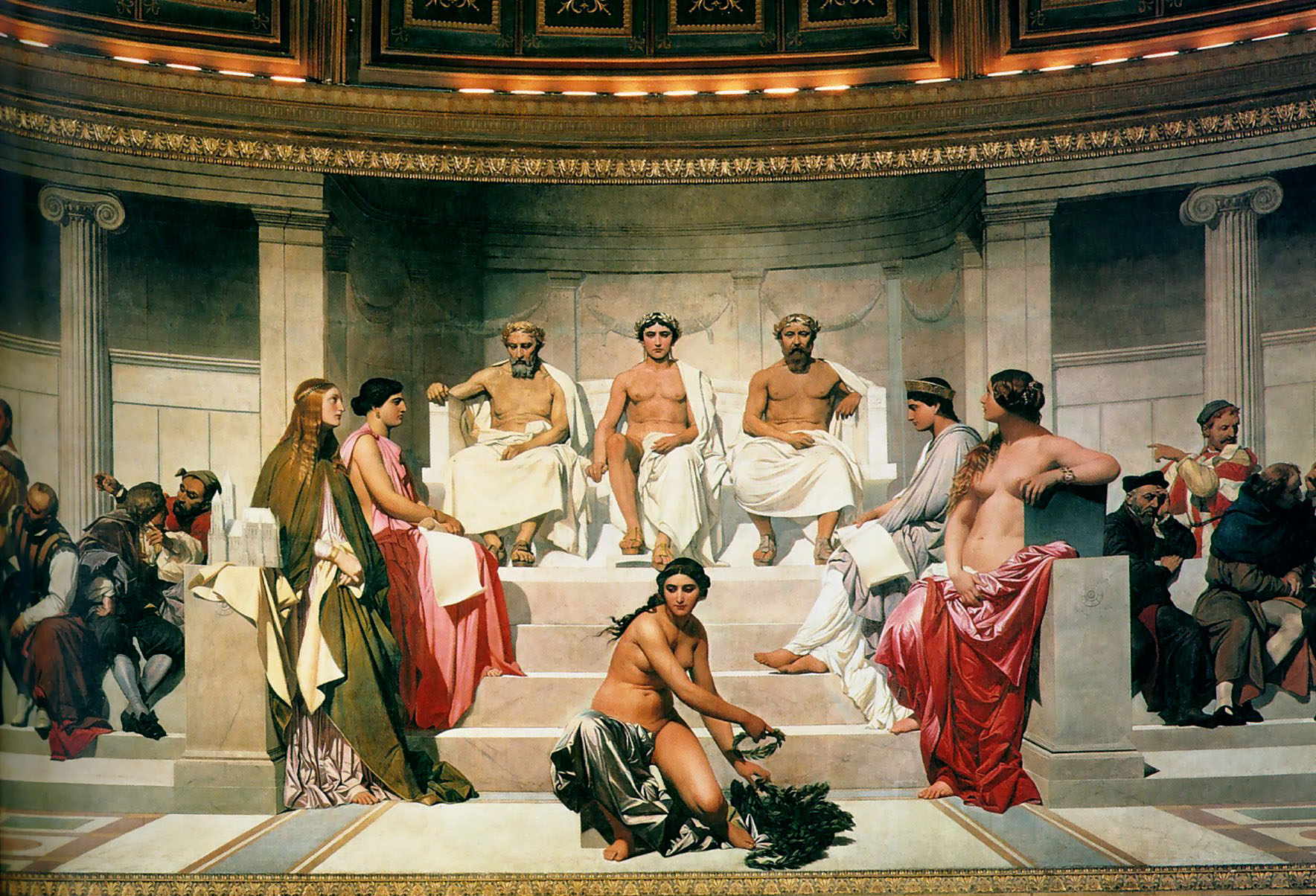
Hémicycle (Central Section) (1842) by Paul Delaroche. Public domain, Wikimedia Commons
To gain entrance into the school (where the likes of Delacriox, Degas, Fragonard, Ingres and Renoir studied) candidates were required to submit not only a varied portfolio of drawings and paintings but also a series of detailed and technically proficient drawings based on ancient classical sculpture. Among applicants who were turned down were Cezanne and Rodin!
Having been living in far-flung corners of the British Empire, Jasmine has no access to classical plaster casts, but is granted a place conditional on her arriving in Paris before the start of term in order to work on creating a selection of classical drawings in the school – or in the Louvre.
Here are some examples of works Jasmine draws in the Louvre:
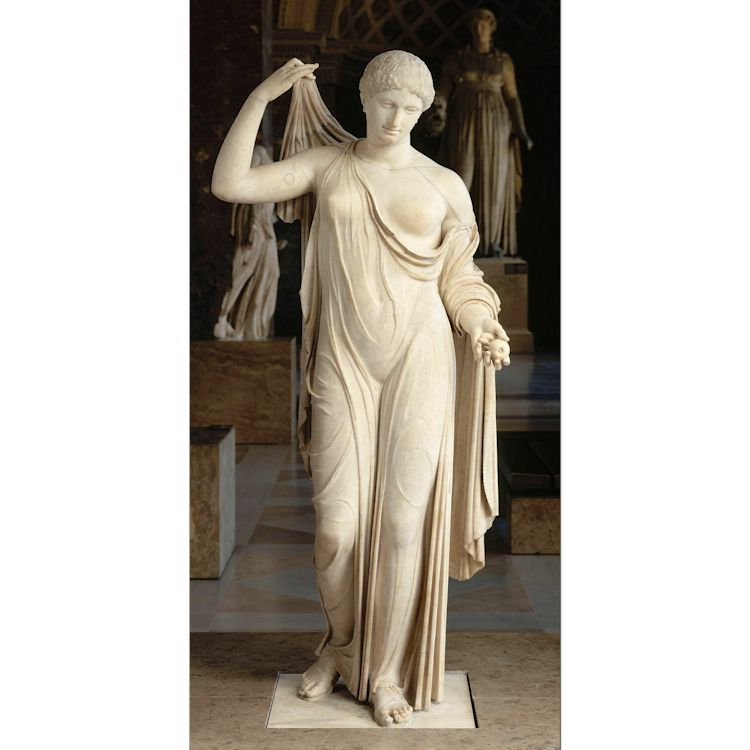
Aphrodite Fréjus, The Louvre
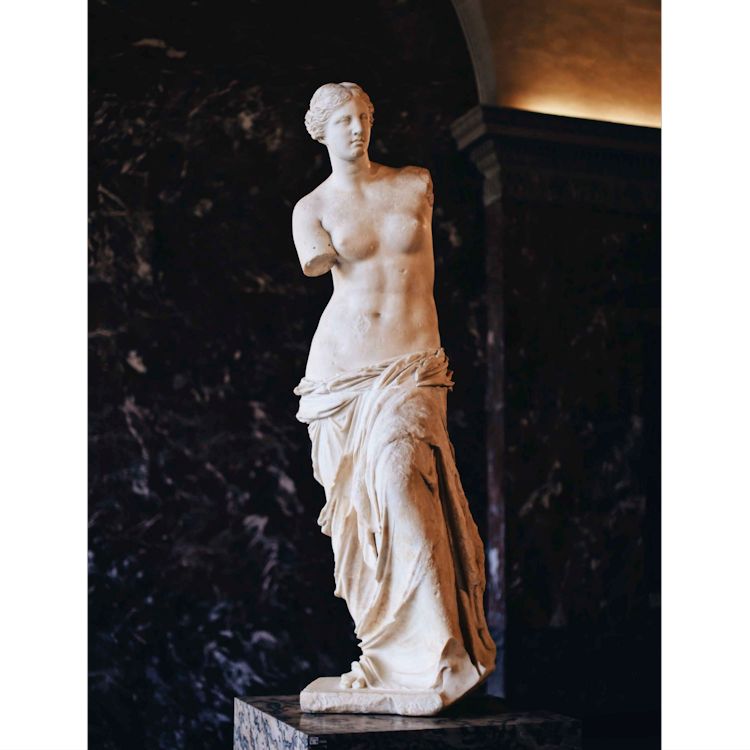
Venus de Milo, image from Tabitha Turner (Unsplash)
Jasmine discusses art with her tutor Lachlan. He uses these two works as examples – La Grande Odalisque by Ingres in a debate with her about breaking rules, and Andrea Mantegna’s The Lamentation over the Dead Christ to explain the technique of foreshortening.
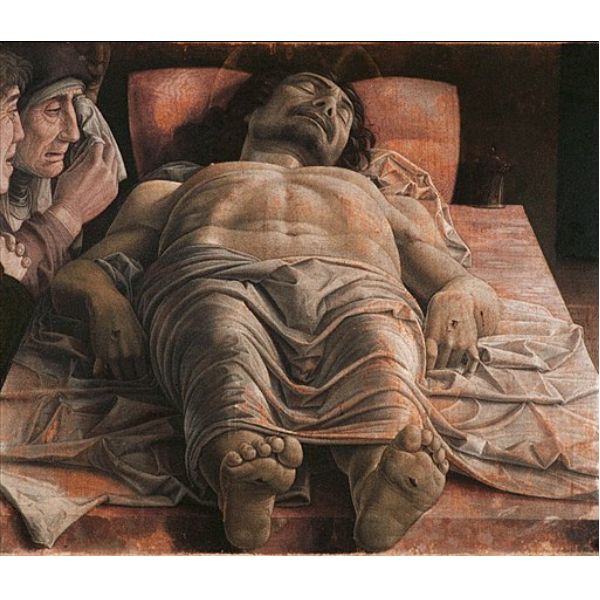
Lamentation over the Dead Christ (c.1480) by Andrea Mantegna. Public Domain via Wikimedia Commons.

La Grande Odalisque (1814) by Jean-Auguste-Dominique Ingres. Public Domain via Wikimedia Commons.
Lachlan also talks about naïve painting with Jasmine – who is insulted when the school principal describes her art that way. He uses the “primitive” art of Henri Rousseau to explain that it’s work by an artist who has had no formal art education. This is a title she herself will forego by studying at the Beaux Arts.
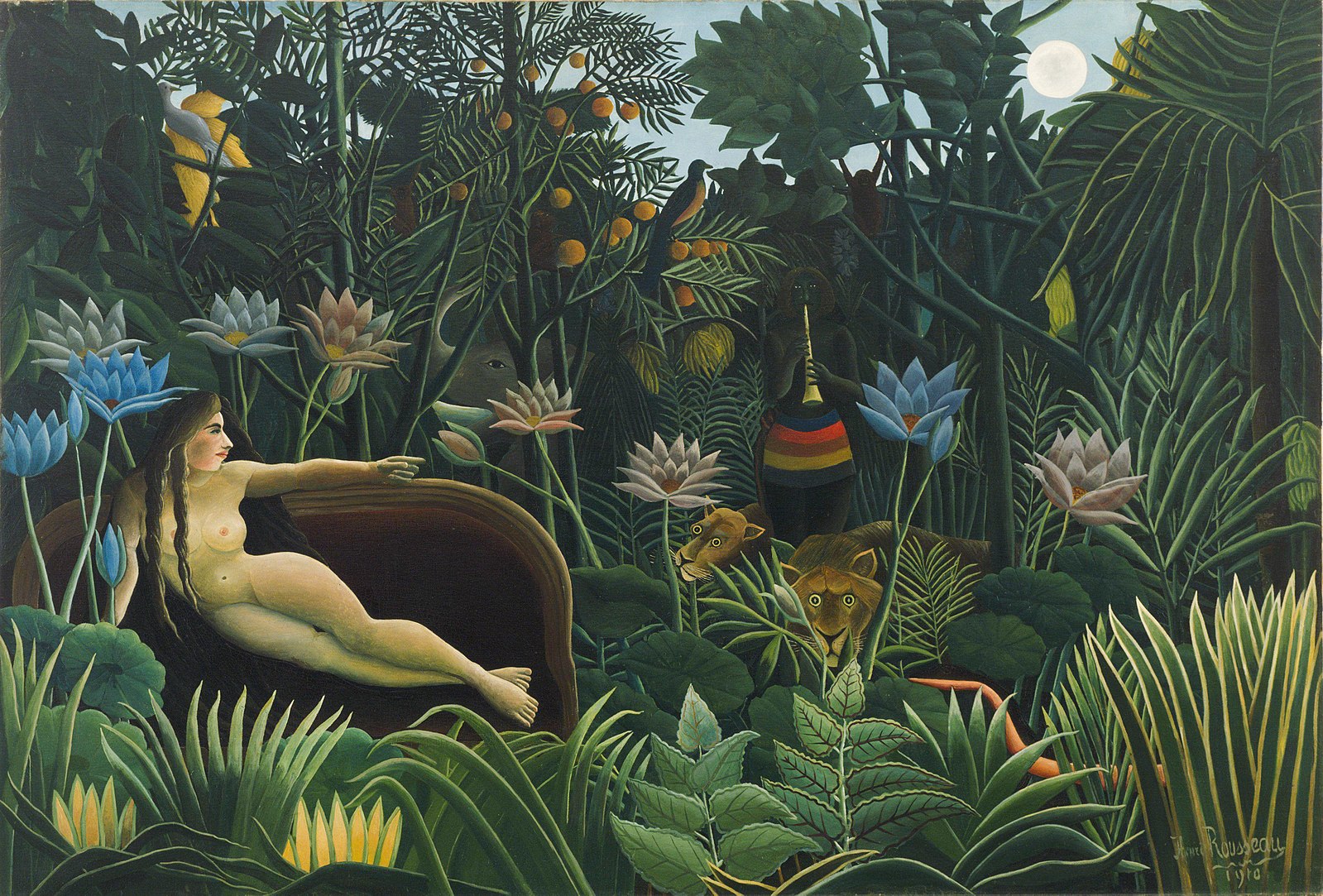
Image of the Dream (1930) by Henri Rousseau. Public domain, via Wikimedia Commons
A recent graduate of the Beaux Arts when Jasmine arrives was Bernard Buffet – an artist enjoying something of a renaissance today in terms of critical evaluation – although not by me! Back in the 1950s he was a celebrity and a huge financial success before the critics turned against him. He has remained popular with the public – mostly for his ghastly clown paintings. Jasmine (also not a fan) sees one of his works in a gallery window and is unimpressed.
Two other genuine artists are mentioned in the novel. Both were graduates of the Beaux Arts. The first is Amrita Sher-Gil, a painter I had never heard of until my brother (an art historian) lent me a book about her short but fascinating life. Half Hungarian-half Indian, Amrita was at the BA in the 1930s and her work was much acclaimed (rightly so in my humble opinion). She was also a beauty who was somewhat promiscuous. Amrita’s life was tragically short. After Paris, she married her Hungarian doctor cousin and went to live in India (where she had an affair with Malcolm Muggeridge – anyone remember him?!). Then at just 28 in 1941, she died of an internal haemorrhage – possibly from a botched abortion performed by her husband. When in Paris she did several beautiful portraits but in India her work became freer and more fluid with less structure. Here are a couple of examples:
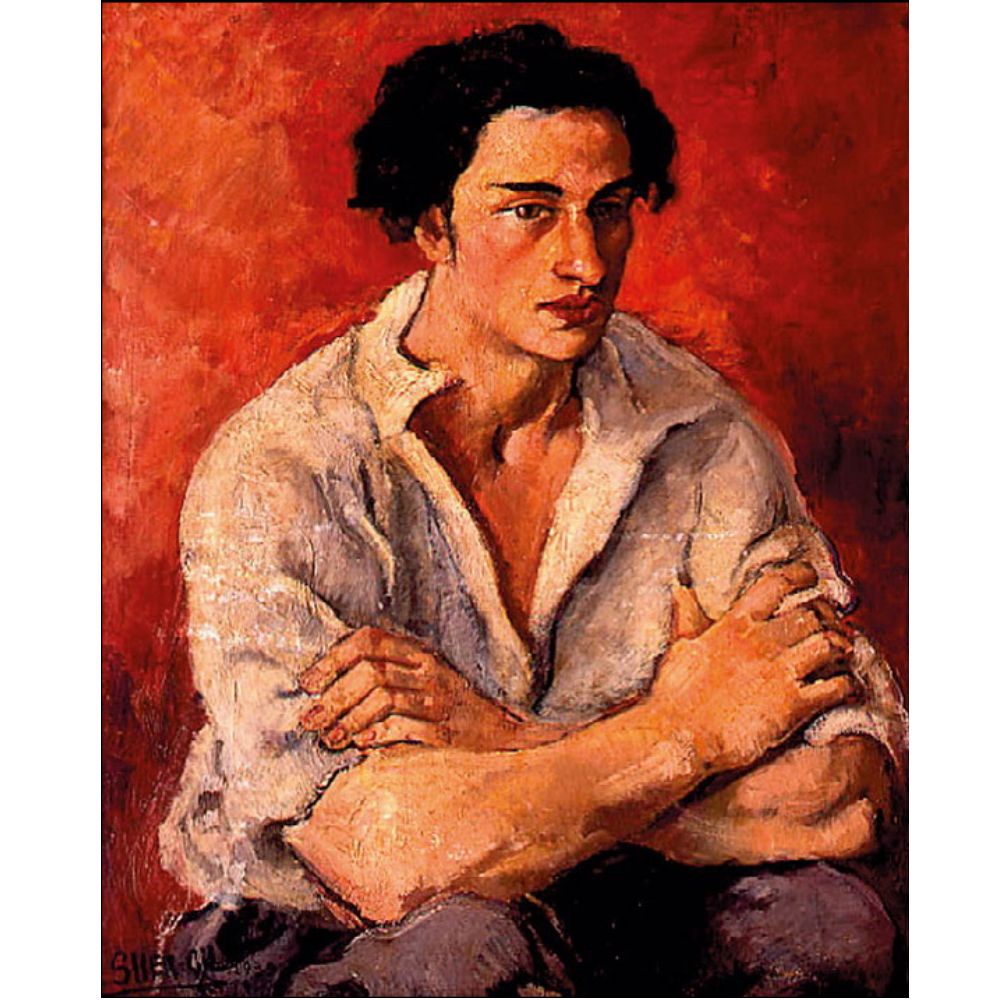
Portrait of a Young Man – Boris Tazlitsky (1930) by Amrita Sher-Gil. From the National Gallery of Modern Art, New Delhi via Wikimedia Commons

Group of Three Girls (1935) by Amrita Sher-Gil. Public domain via Wikimedia Commons
Another real artist who makes a brief appearance in the book is Bernard Cathelin. He was a graduate and a tutor at the Beaux Arts when Jasmine is there – and did actually win the Blumenthal prize (as mentioned in Jasmine in Paris!) He only died in 2004 so I can’t share an image of his work – but google him and have a look. He’s still much acclaimed in France and internationally.


0 Comments